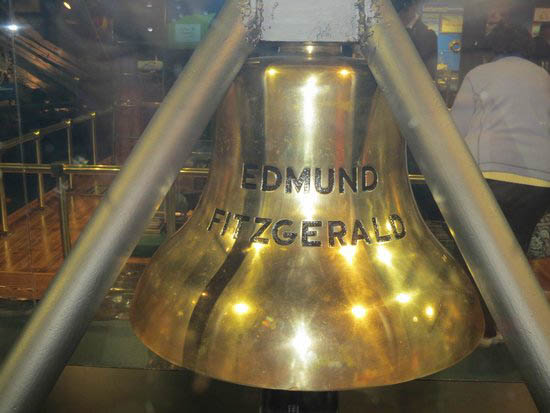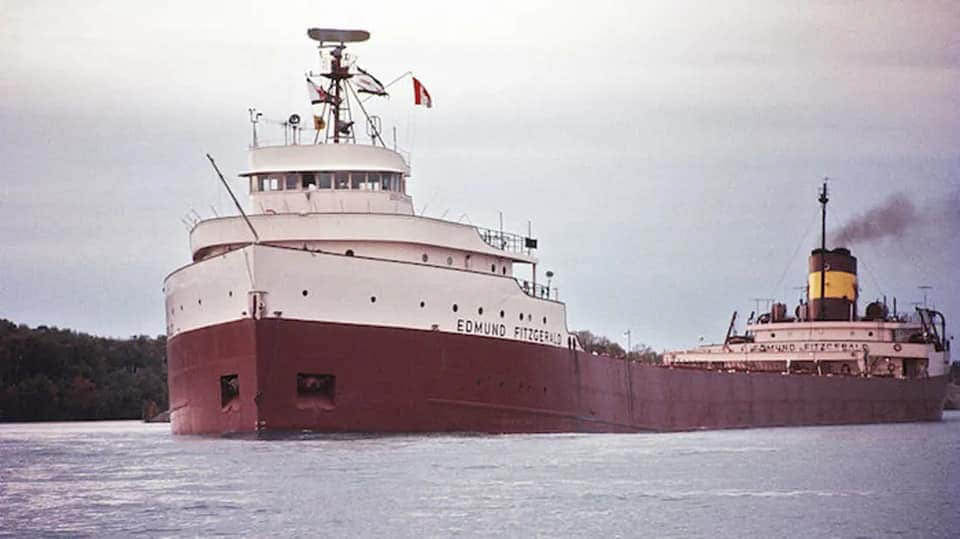Often a monument is erected to honour those who have died, including spontaneous memorials that we see constructed in the immediate aftermath of the tragedy. In the case of the Edmund Fitzgerald, it was not until July 4, 1995, that a memorial was established to honour those lost in the Edmund’s tragedy.
SS Edmund Fitzgerald was an American Great Lakes freighter that sank in a hurricane like storm on Lake Superior on November 10, 1975, killing the entire crew of 29. She was the largest ship on the Great Lakes of North America when it was launched on June 7, 1958, and she remains the only one to have sunk there. The Fitzgerald is located in Whitefish Bay, Lake Superior in 530 feet of water.
There are two distinct schools of thinking about visiting the Fitzgerald. First, it’s a gravesite for the 29 crewmembers who died and leave well enough alone, and from a historic point of view, investigate it to ascertain the cause of the sinking. In 1980, during a research dive trip on Lake Superior, underwater explorer Jean-Michel Cousteau, the son of Jacques Cousteau, sent two divers from RV Calypso to Edmund Fitzgerald in the first manned submersible dive. The dive was short, and while the dive team did not draw any final conclusions, they hypothesised that Edmund Fitzgerald had broken down on the surface.
Twenty years later in 1995, a monument to the Edmund Fitzgerald was completed. The surviving family members initially objected to ship visits/dives and evacuation of pieces of the ship, due to their loved ones who remained on the Fitzgerald. After negotiations with family members of the missing sailors, it was ultimately determined that one, single valuable artefact would be recovered from her. That artefact was the ship’s bell which was attached to the pilothouse’s roof.

Members of the Shipwreck Historical Society of the Great Lakes worked with the Canadian Coast Guard and others to lift the bell and its brace from a depth of 530 feet. The original bell was replaced by a replica bell and was engraved with the names of the 29 missing crewmen, to serve as permanent grave marker.
There is a maritime tradition known as the “Call to the Last Watch,” and the deceased ‘s family and sailors from a Cormorant Canadian Navy vessel rang the bell 30 times — once for each of the Fitzgerald’s crew members, then once for all the sailors missing, once it was brought to the surface.
Edmund Fitzgerald’s bell now calls the Great Lakes Shipwreck Museum at Whitefish Point, Michigan it’s home. This is a centrepiece of a memorial to the crew of Fitzgerald and those who have perished in shipwrecks in The Great Lakes.
We may never know how/why the Edmund Fitzgerald sank so quickly with no distress call (although weather was definitely a factor) while a sister ship, the Arthur M. Anderson survived the wrath of the Lake Superior. But hopefully closure and peace came to the families of those crew members that perished in 1995.
Every year, on the 10th of November, the date of Fitzgerald’s sinking, the bell rings 30 times in remembrance.







